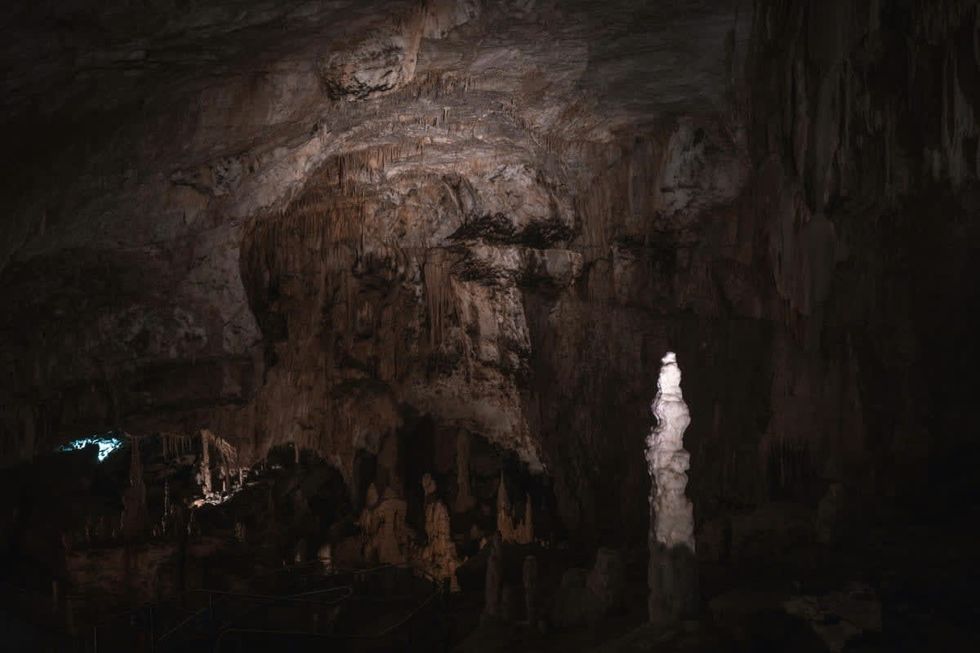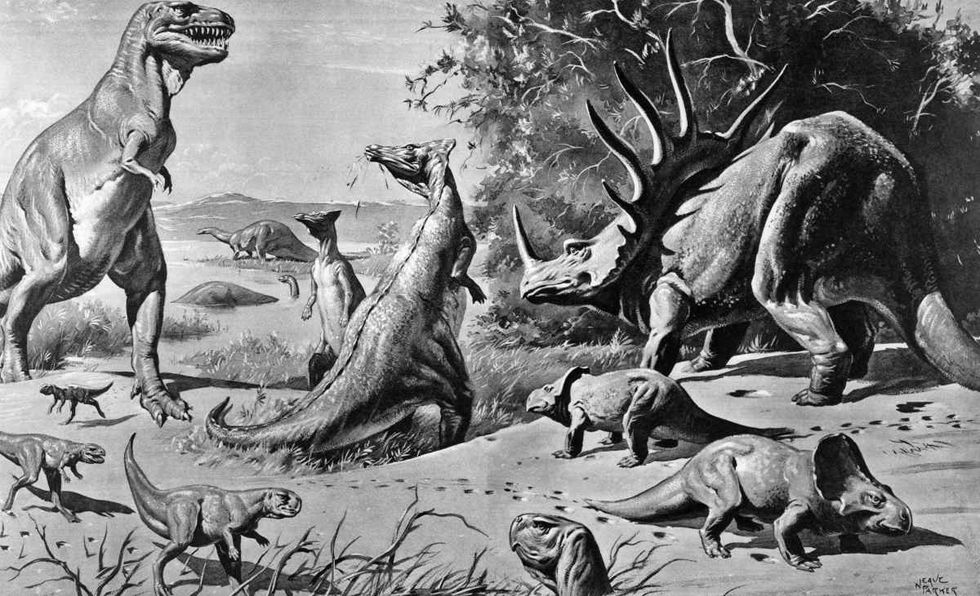Although Earth might seem like a stable, flat surface where we live our lives, seismologists have discovered that it’s far from passive. In fact, Earth has a 'heartbeat' that pulses every 26 seconds, according to Discover Magazine. Known as "microseisms," these faint seismic tremors resemble tiny earthquakes, though they aren’t exactly the same. For decades, scientists have been baffled by these mysterious tremors, and despite many theories, no definitive explanation has been found.

In humans, a heartbeat is produced by electrical signals that cause the heart muscles to contract and expand. But for Earth, the source of its mysterious 'heartbeat' remains unknown. This phenomenon was first documented in the early 1960s by geologist Jack Oliver, who suggested that the pulse might originate from somewhere in the southern or equatorial Atlantic Ocean. However, he lacked the sophisticated instruments needed to investigate further. “Jack didn’t have the resources in 1962 that we had in 2005 — he didn’t have digital seismometers, he was dealing with paper records,” Michael Ritzwoller, a seismologist at the University of Colorado, Boulder, told Discover Magazine. Since then scientists have spent a lot of time listening to this pulse and trying to solve the mystery.
Lars Eivind Augland, associate professor in the Department of Geosciences at the University of Oslo, found the phenomenon of a 26-second pulse fascinating. "Yes, you may call it a kind of pulse. The Earth’s crust has regular tremors. They are so small that they do not pose a threat as real earthquakes can," he told Yara International. Augland explained that every 26 seconds, the heartbeat of Earth is recorded by seismic station computers around the world. These blips are most noticeable in West Africa, North America, and Europe, he said. Geologists and seismologists have given varied explanations behind the occurrence of this phenomenon including ocean waves, volcanoes, and fractures in sediments.
"Originally, the micro-quakes, or the pulse detected at intervals of 26 seconds, were explained by wave activity in the Gulf of Guinea in West Africa. Special depth conditions, the geometry of the ocean floor, and the coast have been pointed out as possible causes. Due to how the waves hit and create resonance on the seabed, they could, in turn, propagate as earthquake waves in the Earth's crust," explained Augland.

In 2013, during the Seismological Society of America conference, a student named Garrett Euler also said the same thing, furthering the source location of the pulse to the region called “Bight of Bonny” in the Gulf of Guinea. He elaborated his hypothesis by adding that waves hitting and crashing against the coast might be the probable reason for this pulse. But this explanation was soon ruled out by most experts.
Apart from ocean waves, a second explanation behind this pulsation was believed to be “volcanoes.” The same year, Yingjie Xia from the Institute of Geodesy and Geophysics in Wuhan, suggested the cause was actually volcanoes, not waves. He explained this by saying that the island of São Tomé in the Bight of Bonny was close to the volcano.

After ruling out waves and volcanoes, Augland proposed a third explanation: sediment cracks. "A third explanation can be found in the latest study published in the renowned journal Earth and Planetary Science Letters, which states that fluid flowing through fractal fissure networks in sediments under the seafloor is the cause of the tremors," Augland told Yara International, further specifying that none of the three explanations have any supporting evidence.
Despite its puzzling nature, the 26-second pulse is not something unusual. According to BRIGHT SIDE’s YouTube video, Earth doesn’t only have a heartbeat but also a humming sound. Some people may notice it, and some may not, but this high-frequency buzzing sound called “The Hum” is prevalent throughout the planet. Like the mysterious 'heartbeat,' geologists have also tried to explain this “mysterious hum or buzz” but none has proved true to their satisfaction.


















 Rice grain and white rice.Image via
Rice grain and white rice.Image via  Person eats rice.Image via
Person eats rice.Image via  Washing and rinsing rice.
Washing and rinsing rice.  Mother and daughter eating rice meal.Image via
Mother and daughter eating rice meal.Image via 

 Bees feeding on food source.Image via
Bees feeding on food source.Image via 
 In the depths...Pexels | francesco ungaro
In the depths...Pexels | francesco ungaro Hope the lights stay on. Pexels | parfait fongang
Hope the lights stay on. Pexels | parfait fongang "That was beyond crazy..." YouTube |
"That was beyond crazy..." YouTube |  "This is the stuff of my nightmares..."YouTube |
"This is the stuff of my nightmares..."YouTube |  "Totally blown away..." YouTube |
"Totally blown away..." YouTube | 
 A representative Image of The Atlantic Ocean. Source: Pexels | Kellie Churchman
A representative Image of The Atlantic Ocean. Source: Pexels | Kellie Churchman Representative Image Source: Painting from a series by Ernest Untermann in the museum at Dinosaur National Monument, Utah.
Representative Image Source: Painting from a series by Ernest Untermann in the museum at Dinosaur National Monument, Utah. Representative Image Source: VARIOUS DINOSAURS IN GOBI DESERT. Photo by H. Armstrong Roberts/ClassicStock/Getty Images
Representative Image Source: VARIOUS DINOSAURS IN GOBI DESERT. Photo by H. Armstrong Roberts/ClassicStock/Getty Images
 Great white shark pokes its head above water.Image pulled from YouTube video - Photo taken by Geraldine Fernandez
Great white shark pokes its head above water.Image pulled from YouTube video - Photo taken by Geraldine Fernandez Great white shark swims in the ocean.Image via Canva - Photo by lindsay_imagery
Great white shark swims in the ocean.Image via Canva - Photo by lindsay_imagery
President Donald J. Trump and photo of a forest.
Public united and adamantly opposes Trump’s plan to roll back the Roadless Rule
There doesn't seem to be much agreement happening in the U.S. right now. Differing moral belief systems, economic disparity, and political divide have made a country with so many positives sometimes feel a little lost. Everyone desperately seeks a niche, a connection, or a strong sense of community to which they can feel a "part of," rather than just "apart."
But there seems to be one thing that the country strongly unites over, and that's the "Roadless Rule." With the Trump Administration attempting to roll back conservation policies that protect U.S. National Forests, Americans are saying in harmony an emphatic "No." A nonpartisan conservation and advocacy organization, the Center for Western Priorities, reviewed a comment analysis on the subject. After receiving 223,862 submissions, a staggering 99 percent are opposed to the president's plan of repeal.
What is the 'Roadless Rule' policy implemented in 2001?
The Roadless Rule has a direct impact on nearly 60 million acres of national forests and grasslands. According to the U.S. Department of Agriculture, the rule prohibits road construction and timber harvests. Enacted in 2001, it is a conservation rule that protects some of the least developed portions of our forests. It's considered to be one of the most important conservation wins in U.S. history.
America's national forests and grasslands are diverse ecosystems, timeless landscapes, and living treasures. They sustain the country with clean water and the wood products necessary to build our communities. The National Parks protected under their umbrella offer incredible recreational retreats and outdoor adventure.
Why does the administration want to roll it back?
U.S. Secretary of Agriculture Brooke L. Rollins told the Department of Agriculture in a 2025 press release, “We are one step closer to common sense management of our national forest lands. Today marks a critical step forward in President Trump’s commitment to restoring local decision-making to federal land managers to empower them to do what’s necessary to protect America’s forests and communities from devastating destruction from fires." Rollins continued, “This administration is dedicated to removing burdensome, outdated, one-size-fits-all regulations that not only put people and livelihoods at risk but also stifle economic growth in rural America. It is vital that we properly manage our federal lands to create healthy, resilient, and productive forests for generations to come. We look forward to hearing directly from the people and communities we serve as we work together to implement productive and commonsense policy for forest land management.”
Forest Service Chief Tom Schultz explained the Roadless Rule frustrated land management and acts as a challenging barrier to action. It prohibits road construction needed to navigate wildfire suppression and properly maintain the forest. Schultz said, “The forests we know today are not the same as the forests of 2001. They are dangerously overstocked and increasingly threatened by drought, mortality, insect-borne disease, and wildfire. It’s time to return land management decisions where they belong – with local Forest Service experts who best understand their forests and communities."
Why are people adamantly opposed to the proposed rollback?
A 2025 article in Earthjustice, a nonprofit environmental law organization, expressed its concern over the protection of national forests covering 36 states and Puerto Rico. A rescinded rule allows increased logging, extractive development, and oil and gas drilling in previously undisturbed backcountry. Here is what some community leaders had to say about it:
President Gloria Burns, Ketchikan Indian Community, said, "You cannot separate us from the land. We depend on Congress to update the outdated and predatory, antiquated laws that allow other countries and outside sources to extract our resource wealth. This is an attack on Tribes and our people who depend on the land to eat. The federal government must act and provide us the safeguards we need or leave our home roadless. We are not willing to risk the destruction of our homelands when no effort has been made to ensure our future is the one our ancestors envisioned for us. Without our lungs (the Tongass) we cannot breathe life into our future generations.”
Linda Behnken, executive director of the Alaska Longline Fishermen’s Association, stated, "Roadbuilding damaged salmon streams in the past — with 240 miles of salmon habitat still blocked by failed road culverts. The Roadless Rule protects our fishing economy and more than 10,000 jobs provided by commercial fishing in Southeast Alaska.”
The Sierra Club's Forest Campaign Manager Alex Craven seemed quite upset, saying, "The Forest Service followed sound science, economic common sense, and overwhelming public support when they adopted such an important and visionary policy more than 20 years ago. Donald Trump is making it crystal clear he is willing to pollute our clean air and drinking water, destroy prized habitat for species, and even increase the risk of devastating wildfires, if it means padding the bottom lines of timber and mining companies.”
The 2025 recession proposal would apply to nearly 45 million acres of the national forests. With so many people writing in opposition to the consensus, the public has determined they don't want it to happen.
Tongass National Forest is at the center of the Trump administration's intention to roll back the 2001 Roadless Rule. You can watch an Alaska Nature Documentary about the wild salmon of Tongass National Forrest here:
- YouTube www.youtube.com
The simple truth is we elect our public officials to make decisions. The hope is they do this for all of our well-being, although often it seems they do not. Even though we don't have much power to control what government officials do, voicing our opinions strongly enough often forces them to alter their present course of action. With a unanimous public voice saying, "No!" maybe this time they will course correct as the public wishes.